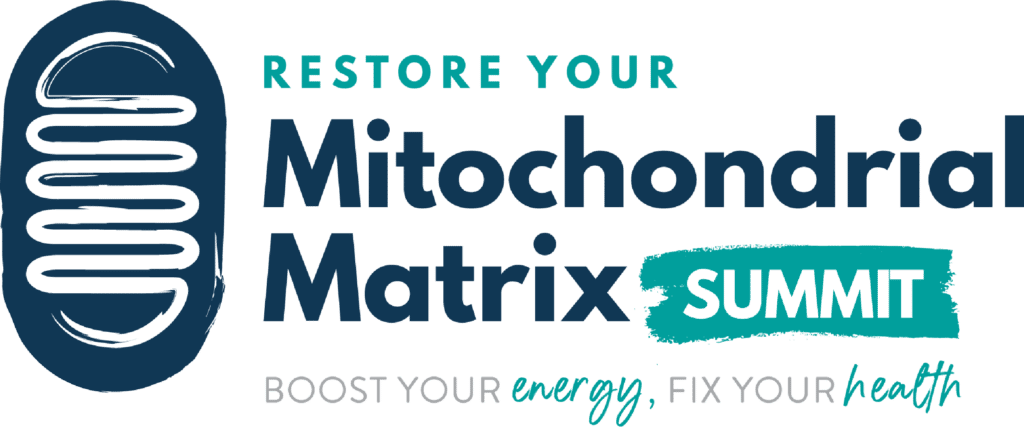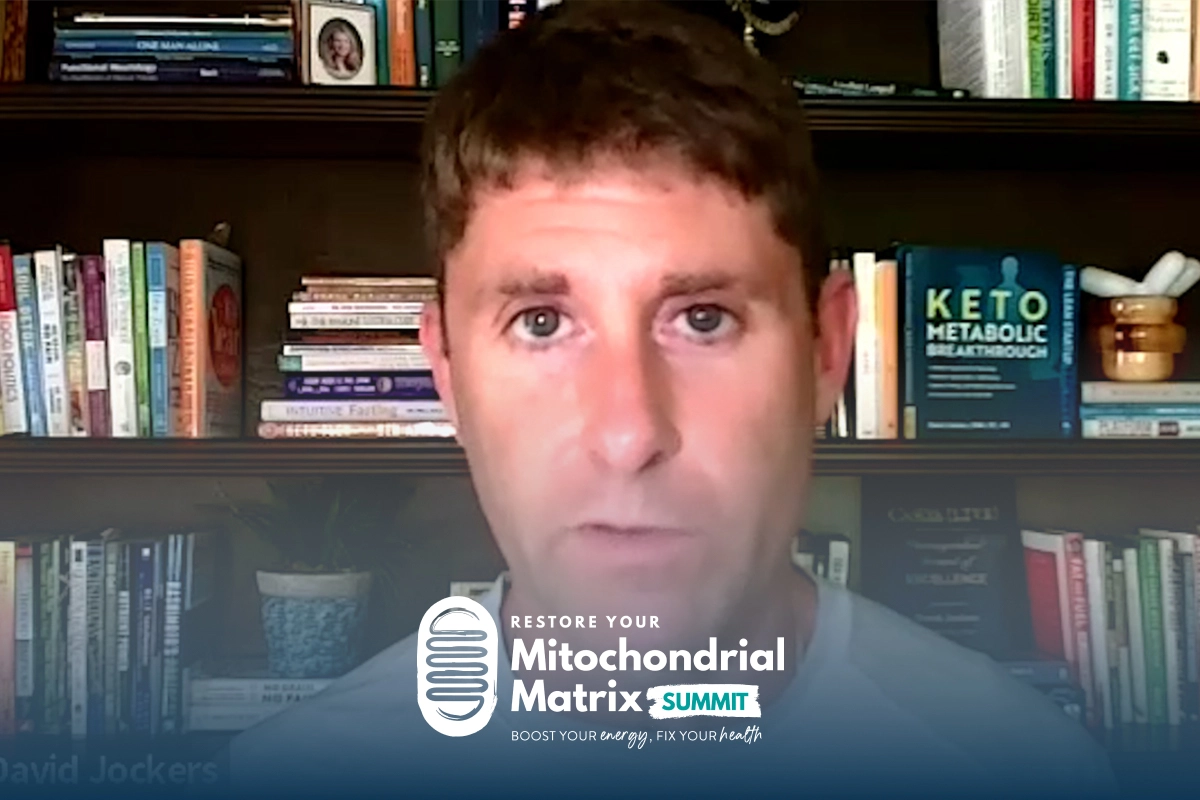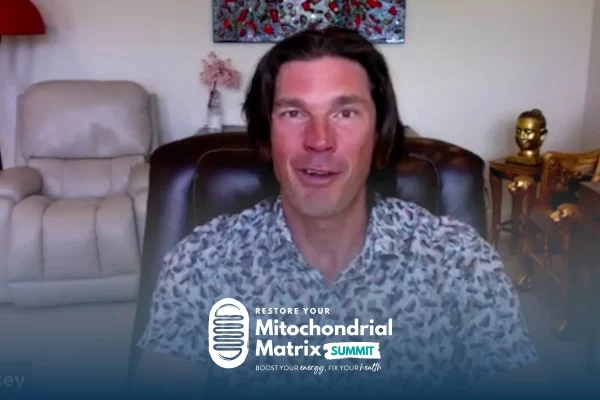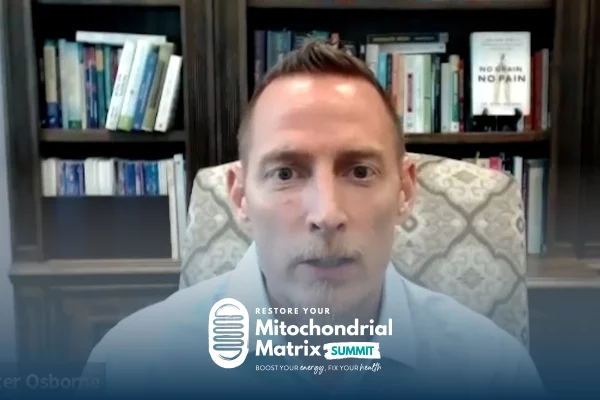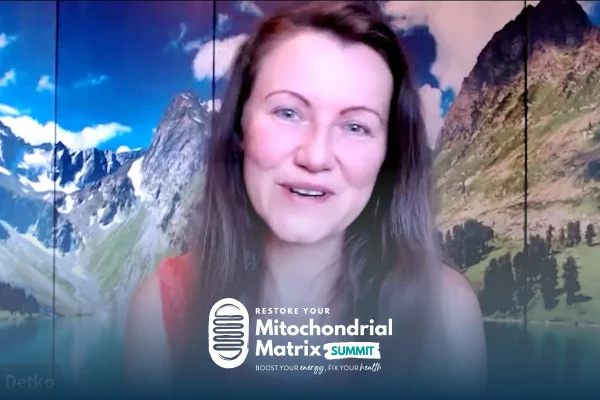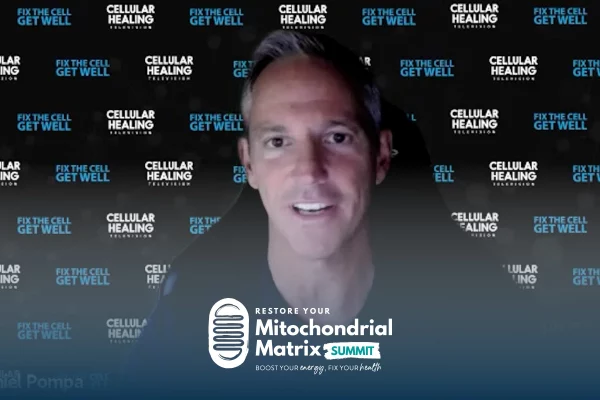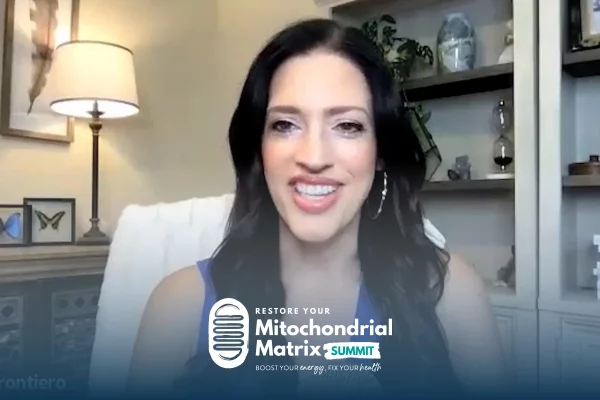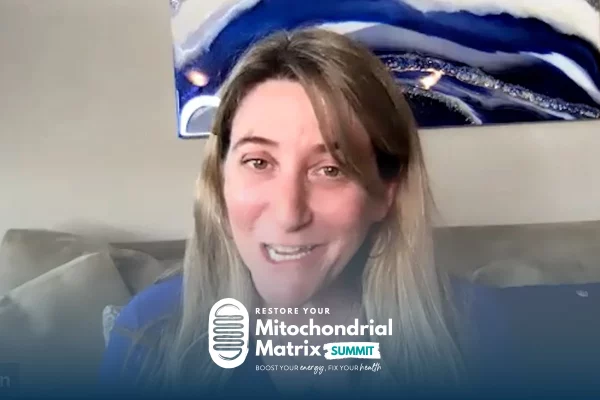Join the discussion below
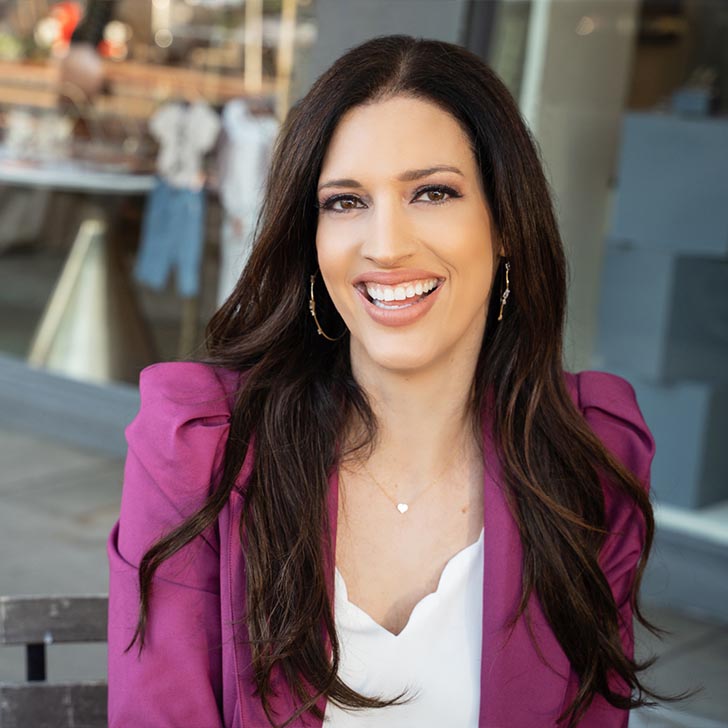
Laura Frontiero, FNP-BC, has served thousands of patients as a Nurse Practitioner over the last 22 years. Her work in the health industry marries both traditional and functional medicine. Laura’s wellness programs help her high-performing clients boost energy, renew mental focus, feel great in their bodies, and be productive again.... Read More

David Jockers, DNM, DC, MS is a doctor of natural medicine, functional nutritionist and corrective care chiropractor. He is the founder of Exodus Health Center in Kennesaw, Georgia and DrJockers.com, a website designed to empower people with science based solutions to improve their health. Read More
- What is Mitochondrial Dysfunction
- How to Activate Mitophagy and Mitochondrial Biogenesis
- Best Herbs, Nutrients and Nutrition Strategies for Deep Cellular Cleansing
Related Topics
Blood Sugar Levels, Brain Health, Cellular Energy, Congestive Heart Failure, Daily Detoxification, Detox, Detoxification Strategies, Emotional Stress Toxins, Energy, Environmental Toxins, Fasting, Functional Nutrition, Functional Nutrition Strategies, Gut Health, Heart Health, Inflammation, Ketosis, Metabolic State, Mitochondria, Mitochondria Dysfunction, Mitochondria Health, Mitochondrial Damage, Mitophagy, Neurodegenerative Conditions, Oxidative Stress, Sleep, Stress Management, Stress Resilience, Toxic Load, Toxic ThresholdLaura Frontiero, FNP-BC
Welcome back to another episode of the Restore Your Mitochondrial Matrix Summit. I’m your host, Laura Frontiero, and I’m bringing you experts to help you boost your energy and fix your health so you can build the life you love. And today, my special guest is someone who I respect so deeply, and who has really been a huge part in my learning and education of functional medicine over the years. It’s Dr. David Jockers. Hi, David, welcome to the summit.
Dr. David Jockers
Thanks so much, Laura. Just really an honor to be a part of this.
Laura Frontiero, FNP-BC
It is, the honor is all mine. I’ve been studying, as I’ve mentioned to you, I’ve been studying your work for a long time. For those of you who don’t know, Dr. Jockers has one of the best blogs out there. You’re a doctor of natural medicine and you run, actually, the most popular natural health website, in my opinion, drjockers.com. It is one of the most-read blogs out there. You get over 1 million monthly visitors, and your work is seen all over the place on media, like “Dr. Oz” and “Hallmark Home and Family.” You’re literally everywhere. You’re the author of a bestselling book, “The Keto Metabolic Breakthrough” and “The Fasting Transformation.” So two books there.
You’re a world-renowned expert in the area of ketosis, and fasting, and inflammation, and functional nutrition. And you have a podcast, “Dr. Jockers Functional Nutrition Podcast.” So this talk today is so… Your work is so relevant in the world of mitochondria because you have, literally, you’re the expert in keto, you’re the expert in fasting, and this is so important to mitochondria health. And so we’re gonna get in that today. So welcome, thank you so much. And start us off with what mitochondria dysfunction is. Let’s just jump right into it.
Dr. David Jockers
Yeah, well, the mitochondria are within all the cells of our body and they, classically, we learn that they create all the energy. And that is what they do. And they also have a sensory structure, meaning that they kind of sense what’s happening in our environment, and they will adapt their function based on what’s happening. Like if they feel like the cell is under threat, or if there’s like a pathogen, or toxins, or if we’re under a tremendous amount of stress, they’ll slow down the energy production. And they’ll almost basically put up a shield, and they will create more oxidation, and that’s all to protect the cell. But if they’re stuck in that position of kind of a hypometabolism and a pro oxidative state, then the mitochondria themselves become very dysfunctional, right? Even though their goal is to protect the cell, to protect the body, but they start becoming dysfunctional. And normally, we have a mechanism and it’s called mitophagy, where our body actually breaks down damaged mitochondria.
The mitochondria become damaged, not only because they become pro oxidative, but just in the general day-to-day. Even if we’re super healthy and we feel great every day, we’re still producing a lot of oxidative stress that’s damaging our mitochondria. So we should be turning over bad mitochondria and actually breaking them down, and then, reusing the materials to create new, healthy mitochondria so we can be more stress-resilient, so we can have more energy, so we can really function and thrive. Our brain has more mitochondria than pretty much all the other cells in the body. I believe the testes and the ovaries have more than the brain, but for every cell, every neuron, you have roughly about 10,000 mitochondria per neuron. Whereas your muscle cells have about 1,000 mitochondria.
So 10 times more in your nerve cells. And that’s why they take up so much of the oxygen, so much of the glucose, so much of the energetic needs that goes into our brain. And that’s because the mitochondria are constantly taking the metabolites and producing energy. And so through, again, just daily stress, we are creating mitochondrial damage. And so we should be breaking down the damaged structures and recycling them, renewing them. And we call that mitophagy, and creating new, young, stress-resilient mitochondria. When we’re not able to do that, when we’re in a metabolic state that is not allowing for healthy levels of mitophagy, or if we’re in a state where our cells, our body feels like we’re in a lot of danger, like our toxic bucket, we’ve accumulated so much toxicity that the body is protecting itself. It’s almost like hibernating and protecting itself.
Or if our pathogen load is so high, or if we’ve experienced a lot of trauma, we have post-traumatic stress from that. If those things are happening, if we’re not sleeping well, right? And our circadian rhythm is all disrupted, then the mitochondria are not able to be repaired properly. And so if that’s the case, then we end up with kind of these older senescent or aged mitochondria that don’t function well. They become very metabolically inflexible, meaning that normally they should be really good at burning fat for fuel. However, when they become damaged by all the different stressors we talked about, hyperglycemia is another big one. When we have high blood sugar or high insulin for a long period of time, these things damage the mitochondria, and then, they’re not able to reshape and renew. And so now, they’re not able to burn fat effectively for fuel. And burning sugar as an energy source is good for short spurts where we don’t have a lot of oxygen. Like, think for example, if you’re running, if you’re sprinting.
We have to produce a lot of energy through glycolysis, through breaking down sugar. And we really can’t rely on fat as an efficient fuel source when we are sprinting, when we’re running really fast, or if we’re lifting weights, lifting heavy weights or something like that. For that short period of time, we really need to burn sugar. However, most of the time we should be burning fat. If we get in a state where our mitochondria are no longer able to burn fat, all we’re doing is producing sugar. And you think about when you’re exercising at a high intensity, you build up a lot of acid, right? Lactic acid as a byproduct. So it’s very inefficient fuel, it’s very dirty fuel. There’s a lot of free radicals that are formed that create, that ramp up inflammation in the body. And it becomes a vicious cycle where we can’t produce enough energy.
We can’t break down fat effectively as an energy source. And we just create more and more stress in our system. And we can’t renew our mitochondria to create new, healthy mitochondria. So we basically need to reset our system. But mitochondrial dysfunction is really at the root of all chronic degeneration. I mean, think about like in the brain, if there’s so much mitochondria in the brain, then if those mitochondria are not functioning well, over time that’s gonna lead to neurodegenerative conditions in the heart. The heart is also an area where we have a lot of mitochondria, roughly about 5,000 mitochondria per cardiac cell. So when the mitochondria start breaking down, we’re much more likely to develop congestive heart failure. So we’re gonna develop these kind of chronic degenerative conditions when the mitochondria are not able to function the way that they were designed.
Laura Frontiero, FNP-BC
So, so much to unpack here, you just covered a lot of ground. And basically to recap, you explained that your mitochondria actually recycle. There is a life cycle. They have to die off. You have to regenerate mitochondria recycling from the old mitochondria. You touched on the toxic load that harms mitochondria. I wanna go back to that for a moment, because I think this is critically important because we have this toxic bucket. You started to talk about that briefly. Could you talk a little bit more about all the different ways that we hurt our mitochondria? Because I think it’s critical for people to even know where to start to heal their bodies, they gotta understand where are these toxins coming from? Why do we have them? And I mean, there’s the toxins that are emotional stress toxins. There’s the toxins from the environment. Then, there’s the lack of sleep. You started to touch on elevated blood sugar levels, but could you get into that toxic bucket and why some people have such a hard time with this, and others can smoke a pack of cigarettes a day until they’re 100 years old, so what’s going on there?
Dr. David Jockers
Yeah, for sure. And a lot of that does come down to an element of genetics, right? So some people can handle a lot more toxicity because their intracellular antioxidant defense system is healthier and functioning better. They’re better able to produce superoxide dismutase, glutathione, different things like that, that help protect them. But ultimately, all of us have a certain bucket, right? And for some people, it fills up faster than others. And when we look at toxins, we have to think about pesticides, herbicides, things like glyphosate, that’s being sprayed on. You know, when we think about Roundup, for example, the common weed killer being sprayed on a lot of our food, right? So that is a potent mitochondrial-damaging toxin. And so toxins from mold inside of our house, from formaldehyde that’s off-gassing from our furniture.
So we’re constantly being exposed to toxins. We should be able to neutralize and eliminate those toxins effectively. However, based on other elements, how well we’re balancing our blood sugar, how well we’re practicing daily detoxification strategies, how well we are managing our stress and sleeping, how well we’re doing a lot of these other things, that’s gonna really dictate how well we clean out our toxic bucket and what our toxic threshold is. And we don’t typically notice symptoms until that threshold, until that toxic bucket reaches a certain level. We call that the threshold level. Once it reaches that level, now we start to feel really bad. Our energy starts to go really down. We start developing brain fog, mood disorders. We start to age faster. We develop more gut issues, things like that.
And so we’ve gotta keep that toxic bucket under control. And another element of it is keeping our pathogen levels under control, right? So we’re all exposed to bacteria, viruses, parasites on a regular basis. And so we’ve gotta do our best to try to minimize our exposure, but then, also support our body’s immune system, support our gut microbiome and our gut mucosa, which is kind of the interface between… Our mucosal membranes are almost like an interface. That’s kind of where our immune system meets the environment, meets these pathogens, kind of the initial place we meet them. And so we wanna keep that gut mucosa, or the respiratory mucosa, our skin, we wanna keep that really, really healthy and strong because those are the barriers, right?
And that’s really where our immune system is kind of the first line of defense there, going up against these pathogens. So that’s super important. So toxins, pathogens are a big factor. Blood sugar, and this is huge. And so, so many people in our society, we are eating processed foods, hyperpalatable foods that are high in carbohydrates that just drive up our blood sugar. And then, insulin comes out. And insulin is an amazing hormone. It takes sugar out of the bloodstream, puts it into the cells where we can use it for energy. And that’s important because when blood sugar goes up, sugar molecules will bind to proteins in the blood, and they will create something called an advanced glycation end-product or an AGE. And so if you think about an AGE, what is that gonna do to you? It’s gonna age you, accelerate the aging process. Damages the mitochondria.
Damages the epithelial lining of your blood vessels. And that obviously can contribute to heart disease. You think about somebody with uncontrolled diabetes, for example, where they have very high levels of blood sugar, hyperglycemia, that’s uncontrolled, what happens? They develop chronic kidney disease because of high blood sugar. These AGES are like shrapnel going right through the kidneys. They damage the blood flow through the kidneys. They damage the kidney cells. And so we end up with kidney failure. They will damage the nerves. We’ll develop peripheral neuropathy or optic neuritis when we have hyperglycemia like this. And so obviously, really, really damaging to the body, create massive amounts of free radical damage and oxidative stress in the system. So insulin helps keep that under control. The problem is when we’re constantly needing higher levels of insulin, our cells stop listening to that message and we develop insulin resistance. And so then, we’re producing insulin. And insulin tells cells to divide.
It also tells us not to burn fat for fuel. So it puts us, it concentrates our cells in this mechanism of glycolysis, where we’re burning sugar for fuel, but not fat. And then, we end up storing fat, and it turns up inflammation in our system. And so many people out there are dealing with insulin resistance or high fasting insulin. I look at that on blood work all the time, what somebody’s fasting insulin levels are. We always wanna see that under six. And it’s very common to see that 8, 9, 10, 20, right? Different areas like that. And most doctors are not testing that. They’re just looking at blood sugar. They’re just looking at things like hemoglobin A1C, which are good things to look at, however, you don’t get the full picture of what’s happening with somebody’s blood sugar dynamics, unless you’re checking fasting insulin, because somebody could have normal blood sugar, good hemoglobin A1C, right? Keeping that, let’s say, under 5.2, which is kind of where I like to see it. However, their insulin may be high.
And that’s kind of the early stages of insulin resistance. And so that’s a big factor because that is going to stop mitochondria’s ability, as long as insulin’s elevated, we’re not gonna be able to perform mitophagy, break down these mitochondria and renew them, right? So when we’re in the state of insulin resistance or high, we have a high insulin load, we don’t recycle cellular components. Our body actually feels like we’re in a fed state, we’re in a highly fed state. So it starts dividing and growing, right? And really, we wanna cycle through periods of growing, but then, and dividing, like that’s important. However, when we become an adult, it’s more important when we’re a child, or a pregnant woman, or an infant, when we become an adult, we wanna be in that kind of fed or growth phase, cell-dividing phase for a very short period of time each day. We wanna spend a lot of time in this place where we’re cleansing, healing, and repairing. And the only way we’re gonna be able to do that effectively is by getting our insulin levels down.
The way that we do that is by reducing it, obviously taking out processed foods, sugars, different things like that, and taking longer periods of time between meals. The best way to get your insulin levels balanced and stabilized is actually what we call intermittent fasting or time-restricted feeding, where we eat our meals in a more condensed eating window. So let’s say like a six or eight-hour eating window. So you can eat your three meals in eight hours, rather than from the moment you wake up to the moment you go to bed. And by doing that, when you compress your eating window like that, your body’s able to reduce its overall insulin load. And you’re able to burn fat more effectively. You’re able to get your insulin levels down past this certain threshold level that now triggers this process of mitophagy, where you’re breaking down these older damaged mitochondria, and you’re regenerating them. So that’s super important, is just understanding your blood sugar dynamics and your insulin levels.
Laura Frontiero, FNP-BC
Yeah, so it’s so interesting. I worked in the Western medicine world for 20 years before I found functional medicine. And we didn’t order insulin levels ever, on anybody. I mean, it just wasn’t done. In terms of screening, we’d look at blood sugar, and then, somewhere in the mid-2000s, we started looking at hemoglobin A1Cs finally. They weren’t even done routinely. And an insulin level, the first time I asked my doctor to test my insulin level, he was like, “Why do you want that?” And because he knows me and trusts me, he just did it, right? But yeah, I mean, this is a missing piece. And so what I’ve just heard you establish is that mitochondria health is really the basis for preventing chronic disease. I had another speaker on here yesterday, who said, “If you heal mitochondria, “your body can heal pretty much everything.” I mean, it sounds like you would agree, it’s very foundational.
Dr. David Jockers
Yeah.
Laura Frontiero, FNP-BC
So you’ve started to talk about how do we get rid of bad mitochondria? You started talking about autophagy and fasting. What are some other ways that we can help clean out the mitochondria, and stimulate growth of new mitochondria, and really support this whole natural process that should be occurring, but it’s being stunted by toxins, and by high glucose levels, and stress, what do we do about it?
Dr. David Jockers
Yeah, for sure. Well, intermittent fasting, like I talked about, is one of the most powerful ways. And then, you can also extend a fast. What I like to do is see people do something like an eight-hour eating window. So they condense their eating window to eight hours, let’s say from 10:00 a.m. to 6:00 p.m., and you can do two or three meals in that time span. And we also wanna really stick with lower carbohydrate foods, okay? So I recommend coming off of grains, sugars, most starches, and really trying to focus on getting in your meals about 30 grams of high quality protein and roughly 30 grams of fat. If you’re a high-level athlete, if you’re trying to build muscle, you might need more protein than that, right?
But roughly about 30 grams of fat, 30 grams of protein, and then, you can kind of fill it out with non-starchy vegetables, right? Things with a lot of color in them, bell peppers, tomatoes, if you’re not sensitive to those, if you don’t feel like those drive up inflammation in your body. Try to get a lot of colors, a lot of colorful vegetables in your diet, berries, different fruits, things like that. But really try to prioritize the protein and the fats, and condense the eating window.
Laura Frontiero, FNP-BC
Can you talk more about protein? I just wanna really nail this because, you know, we have lots of people who have really big opinions about whether you should have animal protein, whether you should have plant protein, whether you should have a combination. What, and from what I’m understanding is everybody’s a little bit different and everybody’s body is different. Everybody’s genetics is different. So what’s your take on this, and how do you support people who might be listening, who are more plant-based, and then, people who are more carnivore-based? What say you about protein?
Dr. David Jockers
Yeah, for sure. I’m more of a fan of animal-based protein. I feel like that is going to really give you the best bang, as far as it’s the most highly bioavailable form. However, if you feel like you wanna, you feel good on a plant-based diet, just try to use good plant-based forms of protein, right? So whatever it is that you’re using, beans, nuts, different things like that. They do come with more enzyme inhibitors and they’re higher, it’s harder to absorb the protein from those. So I’m definitely more of an advocate of animal-based protein from grass-fed animal sources, pasture-raised eggs, wild-caught fish, things like that. And so again, in your meals, trying to get about 30 grams of protein, 30 grams of fat. What you’ll notice is you feel a lot more satiated when you do that. If you hit those numbers, you’re gonna feel more satiated. You’re gonna have less cravings, and it’s gonna be easier to go longer without food.
If you’re eating more higher carbohydrate types of foods, then you’re gonna have more cravings, and you’re gonna be hungry throughout the day. Every few hours, you’re gonna need food. And so try doing that, and then, it becomes easy to kind of compress your eating window. And ideally, what I like to see is, this is something I do every single week. I do one day a week where I do a 20 to 24-hour fast. Typically, I’m doing about 24 hours. So for example, on Wednesdays, I will eat lunch roughly, I eat lunch every day around one to two o’clock, somewhere in that timeframe. And then, I fast until Thursday. And I break my fast after a great workout, right? And the workout itself will actually stimulate this mitophagy, this breakdown of old damaged mitochondria. And we’ll come back to that. But when I eat my meal, I’m fully fasted. I get a great high-intensity workout in. And then, I’ll break the fast after that. When you’re able to push a fast a little bit longer like that, you get higher levels of mitophagy.
And so you’re able to really clean out a lot of cellular junk, a lot of cellular debris. So once you get your body metabolically flexible by eating this style of diet, getting the right amount of fat and the right amount of protein, filling it in with a lot of polyphenol-rich vegetables and fruit, and the way you know they’re rich in polyphenols is you’re getting a lot of different types of colors, right? You should make your meals as colorful as possible, very aromatic using things like basil, oregano, thyme, lots of these great herbs that you’re able to put on your food. And you’re able to get tons of nutrients in those herbs, in those fruits and vegetables, and in your clean proteins and fats.
Laura Frontiero, FNP-BC
Excellent.
Dr. David Jockers
So set up your meals like that, right? And then, again, compress your eating window. For me, I like to do six hours, usually two meals in a six-hour window. Most of the time for me, sometimes I’ll do a little snack, a high-protein snack in there if I need it. And then, one day a week, try to really do that 20 to 24-hour fast. Now, for some individuals, like very lean, somebody like yourself, I don’t know how well you do with a fast like that. But for lean women who are also very active, you know, they have a stress, they have a career. Maybe they’ve got young kids. They’re exercising really intensely, right? And they’re menstruating. It can be tough to do a 16 to 18-hour fast every day, and then a 20 to 24-hour fast once a week. So a lot of times what we’ll do is we’ll do the 16 to 18-hour fast two or three days a week on nonconsecutive days. So we might do a 10-hour eating window, right? Where they’re eating from, let’s say, 8:00 a.m. to 6:00 p.m. on most days, right?
And then, two or three days a week, we will try to really bump that fast and stress the system a little bit so we can clear out some of that mitochondria. The leaner your body is, the more insulin-sensitive. Really, that’s probably the best way to look at it. The more insulin-sensitive your body is, the less time you need to fast in order to break down bad mitochondria. So somebody that’s overweight, right? Especially if you have a lot of abdominal fat, that’s a sign you are very insulin-resistant. So it’s gonna take a longer period of time of fasting to get your insulin levels down below a certain threshold level to where now your body says, “Okay, I need to get proteins and amino acids. “I need to get energy from within my cells. “So I’ll start breaking down these older mitochondria “that are not serving me, “that are not creating the energy that I need “because I need the proteins that are in them, “the amino acids so I can form newer, “healthier mitochondria. “I need to get more efficient with my energy.”
That’s what the body says. “I need to be better at burning fat. “So I need healthier mitochondria.” So for somebody that’s very lean and fit, they need less time of fasting to get the same benefit that somebody that’s overweight and not fit will need. And that’s huge. And then, coupling that with fasting, with exercise, right? Getting regular exercise, regular movement, high-intensity training, whether it’s sprints or weightlifting, something along those lines, something that really challenges you to where you’re in a state of oxygen debt, meaning that you’re breathing heavy, doing something like that, obviously we wanna move every single day, I recommend moving every day, but doing high-intensity exercise three to five days a week. And you don’t need a very long period of time, maybe 30 minutes, three to five days a week, the mitochondria. And of course, the brain detoxifies itself, right? And that’s when we go through the highest levels of brain mitophagy, where we break down the old, damaged mitochondria in our brain is when we’re sleeping. So super critical that we’re prioritizing good sleep as well.
Laura Frontiero, FNP-BC
These are all such amazing tips. And so for everyone listening, you don’t have to do these all at once. This is something that you, if you’ve never done fasting, if you aren’t really into an exercise routine, you can start little and just keep growing that muscle. You can start by shifting some of your foods out. And I really would encourage you to go to Dr. Jockers’s blog because his blogs read like a whole manual on how to do this. So definitely, there’s an excellent resource for you there as well. Now, can you tie in gut health for me? You started to talk about that. And I know we could go so many directions with this, and you’re just so full of information. Can you talk about why it’s important that when you’re working on restoring mitochondrial health, that you also focus on gut health? What’s the connection there?
Dr. David Jockers
Gut health is so key because that’s really where most people are, it’s kind of the root of where most people’s inflammation is coming. And so not only do we absorb nutrients through our gut lining, but our gut lining itself is really where, it’s kinda, again, one of the main interfaces between our immune system and our outside environment. So we eat food, it comes into our system, gets into the intestines. The intestines are only one cell wall layer. And that’s because they’re built for optimal assimilation of nutrients, right? Our ancestors didn’t have a whole lot of access to food. So when they ate, they needed to absorb as much nutrients as possible. Today, we have tons of food around us, right?
We have so much food. I mean, in my house, I mean, I don’t have to buy groceries for weeks if I didn’t want to, because I got so much food available. So we could be eating all day long. And our gut really was not designed for that. And so we are being exposed to so many different things as they’re coming through there. And when the gut lining, the tight junctions are holding that one cell layer, when they start to become weak and they start to break down, we call that leaky gut or intestinal permeability. And then, proteins will seep into the digestive, or into the bloodstream from the digestive system. And they will trigger inflammation in our body, right? And when we’re triggering inflammation, because we have a lot of proteins, we have bacteria, we have fungal organisms, parasites, things like that, that are now getting into the bloodstream, it drives up inflammation throughout our body, right? And when we have higher levels of inflammation, that tells the mitochondria, “Okay, we need to slow down our energy production, “and we need to basically put on our shield,” right? “We need to create oxidative stress “because we are in danger,” and it triggers something called a cell danger response.
And we trigger this cell danger response whenever we have high levels of toxicity, high microbial load in the bloodstream, right? So if we have food sensitivities or lots of bacteria, microorganisms in our bloodstream. If we’re under a tremendous amount of stress. If we’re not sleeping right and we have circadian rhythm disruption. All those things are gonna trigger this cell danger response. And now, the mitochondria are gonna stop producing efficient amounts of energy. And they’re gonna start producing a lot of oxidative stress. So they’re gonna actually age and they’re gonna turn up, they’re gonna accelerate the aging process of all the cells of our body. Now, this is a protective mechanism. And it’s healthy when it’s done for a short period of time. And then, the cell is able to go through a healing response.
The problem, and that’s normal, like if you eat a meal, especially if you have, you know, if you go out and eat at a restaurant in today’s day and age, you’re probably getting pesticides, herbicides. You’re probably getting some damaged vegetable fats, things like that. We all do it from time to time, right? And so we develop some level of damage in our gut. We’ve got some proteins and bacteria seeping into our bloodstream. But if we’re able to, let’s say go 14, 16, 18 hours, fasting after that, maybe we take some good support supplements, we sleep really well that night, we keep our stress under control, our body’s able to go through a healing cycle and reset itself, okay? And now, the mitochondria are now producing energy the way that they should. We’ve kind of balanced things. We’ve triaged and we’ve gotten rid of these pathogens in our bloodstream. We’ve brought the toxicity levels down under threshold. We’ve brought our insulin levels down under threshold. We’re back in a place where we can heal, repair, and function optimally. And that is normal, it’s normal physiology. All of us should be going through that. In fact, to some degree, that’s actually healthy. We call it hormesis.
When we’re exposed to small amounts of stress, it actually primes our body. We get more resilient because of it. The problem is, in our society, we are constantly doing this, right? We’re eating foods every few hours that are damaging our gut lining, creating leaky gut, allowing pathogens to get in, allowing toxins to get into our bloodstream, triggering more inflammation. And every single time we do that, we’re not allowing the cells to go through a full healing cycle. And so we’re just triggering more, and more, and more, and more inflammation. And the mitochondria gets stuck in this hypometabolic pro-oxidative state. And now, we’re not able to produce the energy that we need. And over time, we develop fatigue where we’re just constantly tired. We constantly have brain fog. We have mood disorders. And we just can’t seem to break the cycle because it becomes a vicious cycle that amplifies upon itself. And that’s where the issue lies.
Laura Frontiero, FNP-BC
Thank you for breaking that down. Now, you touched on something, and in the time we have left, I’d love for you to go into this. There’s some herbs and compounds that are supportive as you’re restoring mitochondrial health, as you’re building back that body strength and your immune system. And what are the things that people can do to support, and not to replace these lifestyle things. It’s really important to do the lifestyle piece. But you can take some of the pressure off. You can speed the process if you’re incorporating this. And this is what I always teach is, you cannot get the results if all you do is take the supplements. It’s no different than the Western medicine model when you’re taking a pill to fix a problem, you have to do the lifestyle pieces, but you can kind of, you can make it happen faster. You can ease, you can take some, make it easier. So what do you recommend adding in, layering in?
Dr. David Jockers
Yeah, there are some, there are actually a bunch of different herbs that we call senolytic, meaning that they help break down, and lead to the destruction. They turn on different mechanisms to help break down these senescent or aged cells and aged mitochondria. And so these things are things like, for example, EGCG, which we find in green tea and in dark chocolate. Carvacrol, which we find in oregano. Rosmarinic acid, which we find in rosemary. Curcumin, which we find in turmeric, right? And a lot of people, listeners, I’m sure are supplementing with turmeric or they’re trying to put it in their food, so the curcuminoids in there are really great for this. Resveratrol is another really great one, quercetin. Resveratrol you find in the skins, quercetin as well, in the skins of different fruits and vegetables. Like resveratrol, you find it in grapes and in blueberries. And quercetin, you find in red onions, on the outer skin of it.
Apples, on the skin of the apple, right? You find these types of things. And so these are all, they all help to kind of move the body in the direction of breaking down these damaged mitochondria. And that’s so helpful. And of course, you can supplement with clinical doses. That’s where you’re gonna get, foods are fantastic. You get kind of a full spectrum array of these types of nutrients. So you should be including a lot of these herbs and compounds in your diet on a regular basis. Even coffee has chlorogenic acid, caffeic acid in it, that will also help stimulate mitophagy and autophagy. And so all those things are great if your body’s responding well. You know, we always say, “One man’s superfood is another man’s poison.” So if there’s a certain herb or coffee that you don’t respond well to, you don’t have to use that. There’s plenty of other things that you can experiment with. And then, you can get clinical doses of these in different supplements.
And then, as far as like an energy-type support, the mitochondrial respond well when they’re starting to see the blood being flooded with some powerful nutrients, like coenzyme Q10, acetyl-L-carnitine, different glutathione, for example, by boosting up your glutathione levels with things like N-acetylcysteine, or liposomal form of glutathione. That’s gonna help tame your immune system. It’s gonna help modulate, meaning balance your immune system. Vitamin D would be another key thing for balancing your immune system and reducing the amount of inflammation amplification, like we were talking about. When we do that, the mitochondria start to respond, they start to awaken. They say, “Okay, we don’t need to hibernate,” right? “We don’t need to put up the shield. “We can actually now come out and really start expressing “our full potential and producing the energy that we need.”
So those things can be really helpful. A lot of people, when they’re supplementing with a good, highly absorbable form of CoQ10, they just notice, like their brain comes up, their energy picks up, right? And that can be really, really helpful. So usually when I’m dealing with somebody that is in this state of chronic fatigue or something like that, outside of trying to get to some of the root causes, like reducing their toxic load, dealing with pathogens, supporting them with high doses of coenzyme Q10, 200 to maybe 600 milligrams. Usually I use a form of ubiquinol, which is a little bit higher absorbability, that can work really, really well. And then, also clinical doses of things like quercetin, like we talked about. N-acetylcysteine. I see a lot of people who are very deficient in zinc, okay? So getting some zinc in there, vitamin D, vitamin C, vitamin A.
So all those kind of fat-soluble, water-soluble vitamins can be really, really helpful. And selenium oftentimes can be really supportive. So those are some different things. And a lot of times you can find supplements that have a bunch of these things in them that make it really, really helpful, right? There’s mitochondrial support supplements that have things like acetyl-L-carnitine, coenzyme Q10, maybe some B vitamins that may be really helpful to have on board, creatine actually can be really helpful. We used to think of creatine as just something that athletes used to increase muscle size and muscle strength, but we’re realizing that creatine is super important for energy production in general, particularly like explosive energy, and being able to think sharply and quickly. So it can be really helpful for brain health, for cardiovascular health. And a lot of people are very deficient in creatine, especially if you’re not eating meat, you’re really not getting a nutritional source of it. So you can really support that as well. And that can make a big difference.
Laura Frontiero, FNP-BC
Something I wanna highlight right here. And you touched on something that’s really important. You talked about using high-dosing and therapeutic-dosing of supplements. And I’m sure you’d agree what I wanna share with the audience is that, you know, the FDA regulates what supplement makers can put as the upper limit. And a lot of times on the supplement bottle, it’s very low-dosing and not actually in a range that’s gonna support you. So I wanna highlight it’s really important to work with a practitioner, or a nutrition expert, or someone who can guide you and share with you how high you can go on these supplements, ’cause oftentimes, you’re really under-dosing yourself. And I’m sure you’d agree, it’s really hard to be kind of, there’s a lot of people watching who wanna DIY. They wanna do it themselves, but you really, it’s really hard to figure this out yourself by just reading, and reading, and sifting through information online. And just know that a lot of these supplements, you can go much higher than is recommended. And if we were in control of everything, I’m sure you’d agree, David, we would have much higher doses on the bottles.
Dr. David Jockers
Oh yeah, for sure.
Laura Frontiero, FNP-BC
It’s kind of a joke what has to be on that bottle due to the FDA. So I just wanna say that, like side note, work with a practitioner. David has an army of nutritionists that work with him. Work with somebody you found on this summit who can help guide you through that, because it’s really not worth it if you’re just taking little, teeny, tiny doses, you’re not gonna get anywhere.
Dr. David Jockers
Yeah, for sure. Yeah, so that’s what’s gonna really move the needle. When we’re dealing with these inflammation-amplifying cycles, we really need to hit it with high doses. Resveratrol in high doses, curcumin in high doses, glutathione in high doses. And that, it doesn’t have to be for a long period of time. It’s a short period of time, high doses of these things tell the system, “Okay, shut down this inflammation,” right? “We’re in a place where we can focus on thriving, “and not just on surviving,” and shuts off these cycles.
Laura Frontiero, FNP-BC
Absolutely, this has been incredible. You know, I could interview you for hours, and I’m sure that our listeners are gonna go back and they’re going to take notes again and again, with all the wisdom and information you’ve dropped here. In closing, is there any closing things that you wanna share with people on their journey to restoring their health, and their energy, and doing it from a mitochondria level, from a gut health level, from a boost that immune system level, anything else, any pearls you’d like to share?
Dr. David Jockers
Yeah, we covered a lot today. And so I would just say, you know, you really wanna get your mindset right. Like these are all things that you can do. Intermittent fasting, I find to be the most powerful. It’s the most ancient, inexpensive, and powerful healing strategy known to mankind. All of our ancestors did it. They didn’t have access to food. They didn’t have refrigerators and pantries. So they just had to fast. Today, we have to be intentional about it. We have to actually think about it and think about missing a meal in order to actually go through the process and do it. But you wanna set your body up for success.
So remember, I talked about when you are eating meals, making sure you’re getting enough protein and fat, it’s gonna create that satiety, making it a lot easier for you to fast. Hydrating your body well, and that doesn’t cost anything. You know, we talked about supplements, but intermittent fasting, good nutrition, and exercise is, you know, it’s basically free, right? And so that’s a great place to start. And if you need a resource, I have a great book called, “The Fasting Transformation,” a fantastic book which really walks you through how to practice intermittent fasting. We talk about partial fasting. We also talk about extended fasting, where you can get even more mitochondrial supportive benefit. Especially if you’re looking to reverse some sort of chronic disease, that can be extremely helpful.
Laura Frontiero, FNP-BC
Excellent, tell us where else we can find you, David.
Dr. David Jockers
Yeah.
Laura Frontiero, FNP-BC
Where’s your blog, where’s your podcast?
Dr. David Jockers
Yeah, drjockers.com. The podcast, just look up Dr. Jockers Functional Nutrition Podcasts. And I’m on YouTube and different social media channels as well.
Laura Frontiero, FNP-BC
Excellent, thank you so much for your expertise, for your time. And I just wanna acknowledge you for the contribution you are to medicine and to people healing at the cellular level, and really getting incredible outcomes where Western medicine couldn’t get people to where they are. So thank you because you are inspiring for all of us practitioners, and for people consuming healthcare as well. So thank you.
Dr. David Jockers
Great. Well, thank you so much, Laura. I really appreciate all the great work that you’re doing getting this message out, thank you.
Laura Frontiero, FNP-BC
Yeah, I appreciate you. Take good care now, bye.
Downloads
